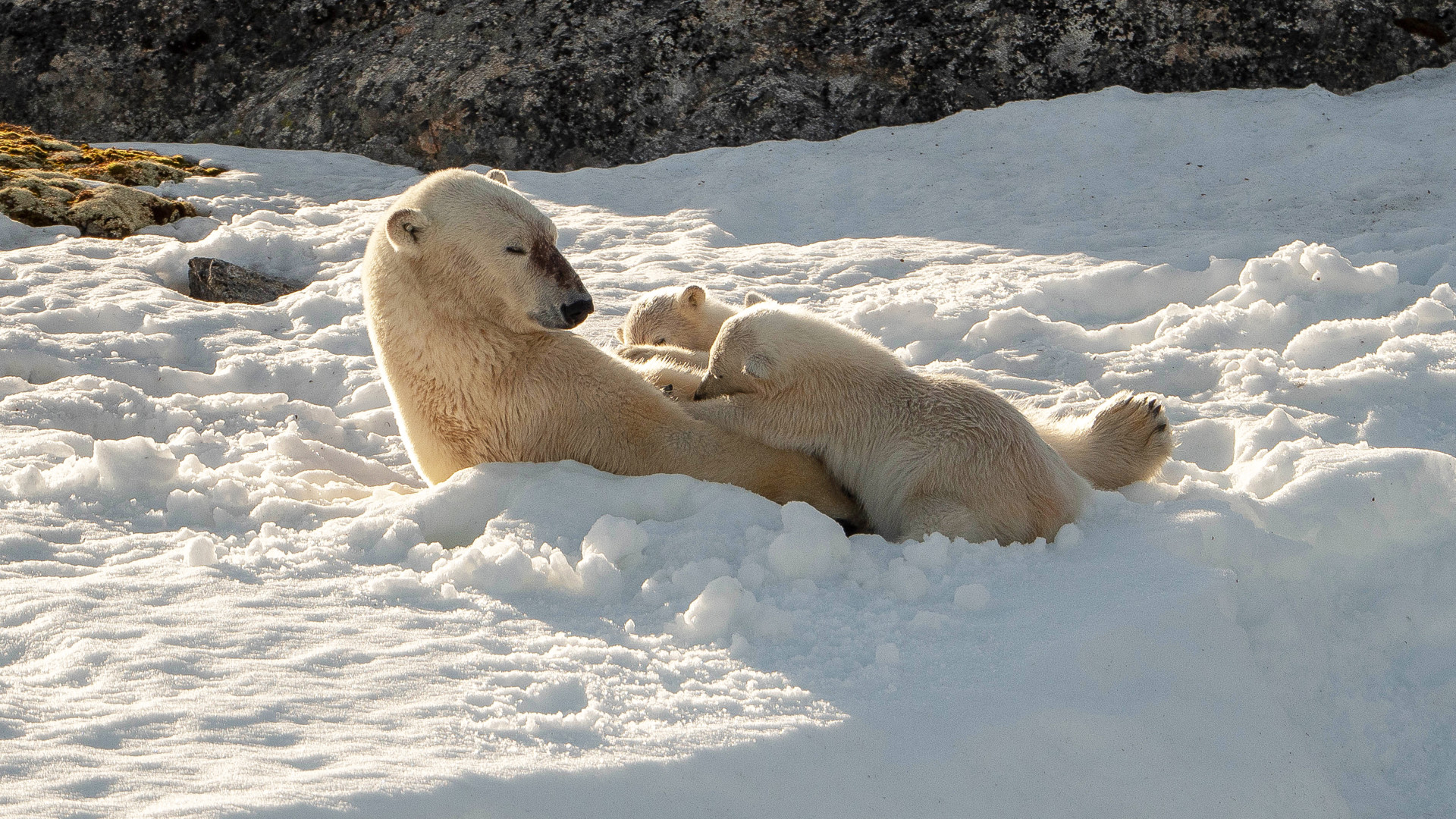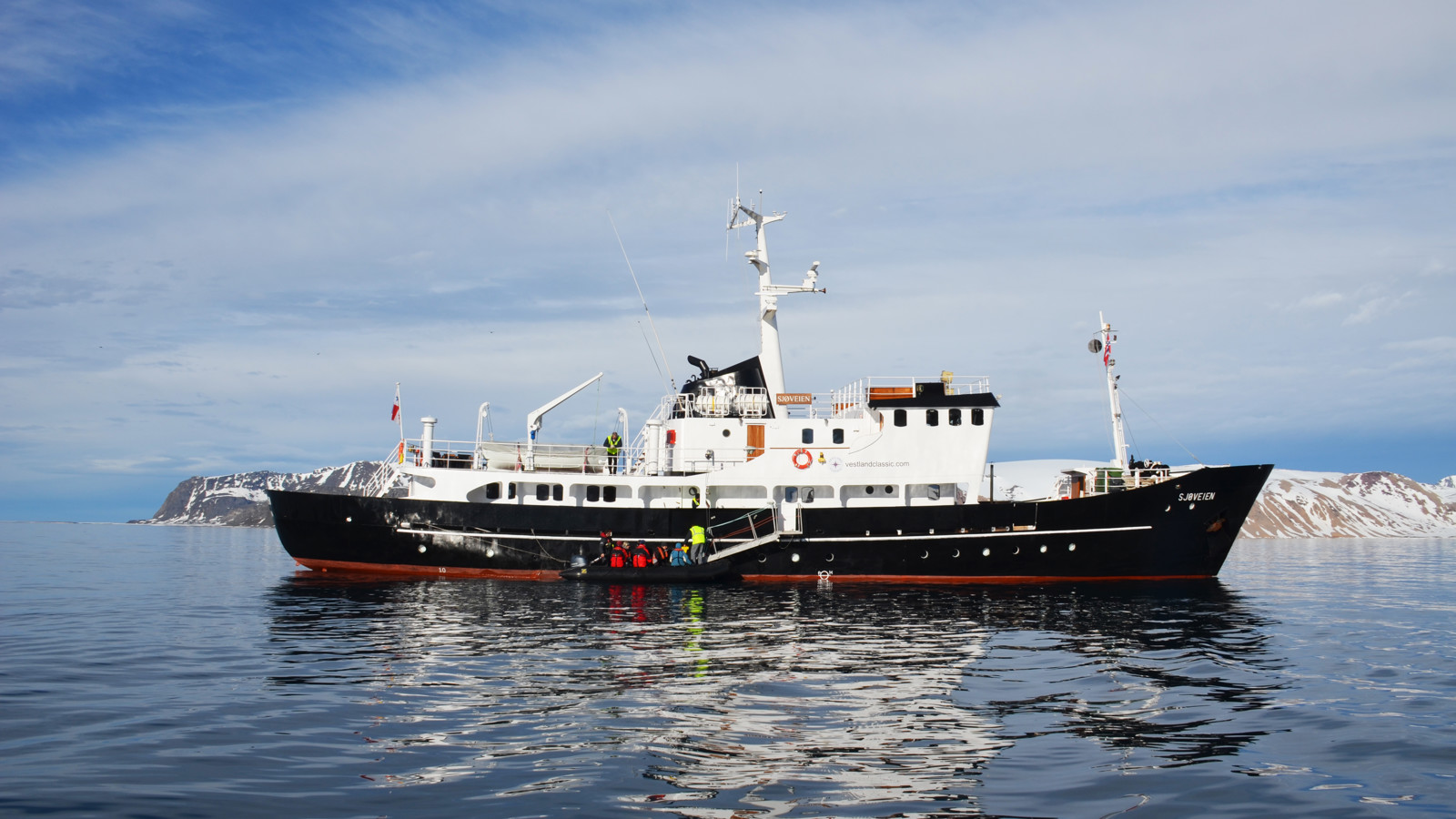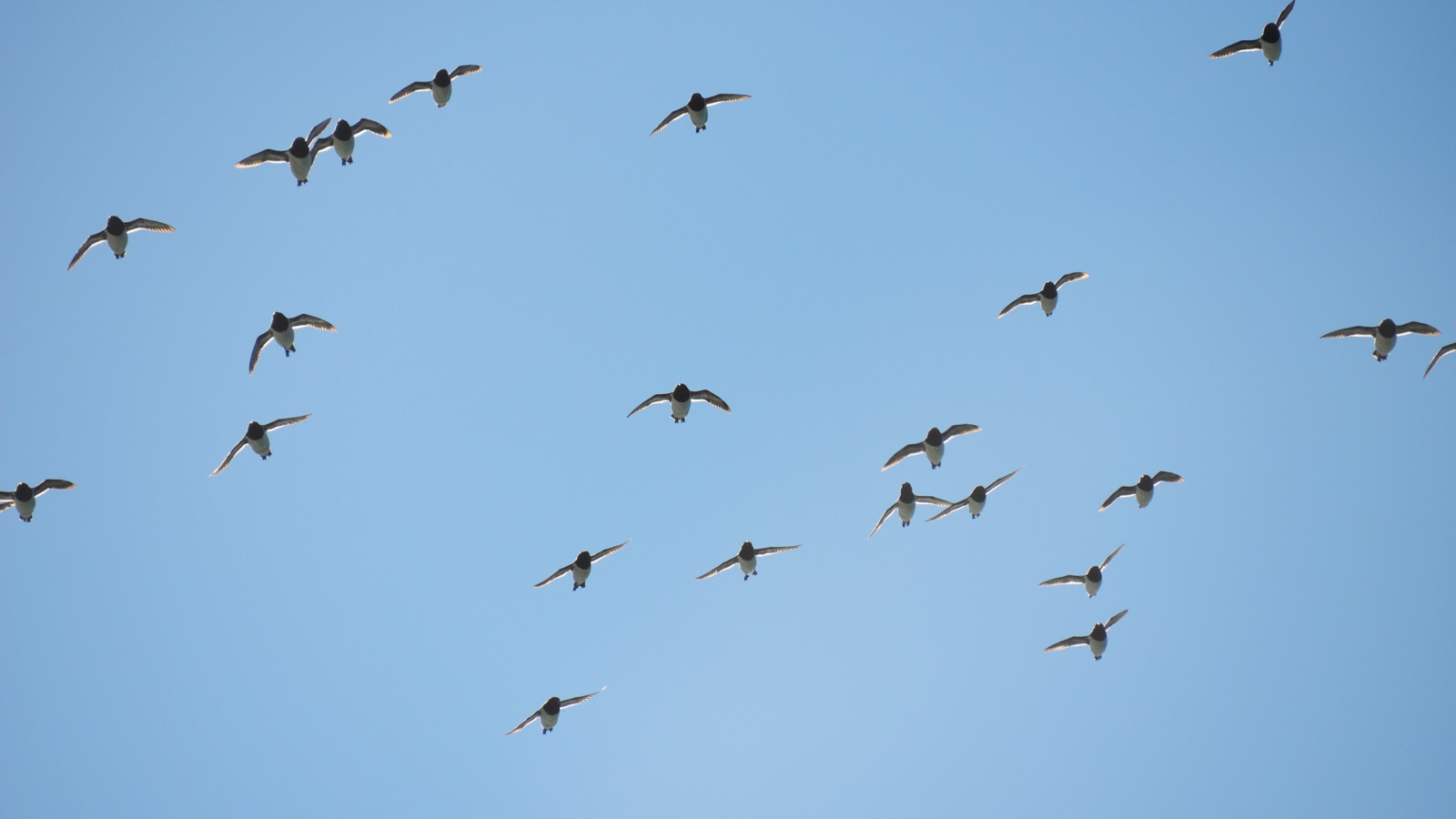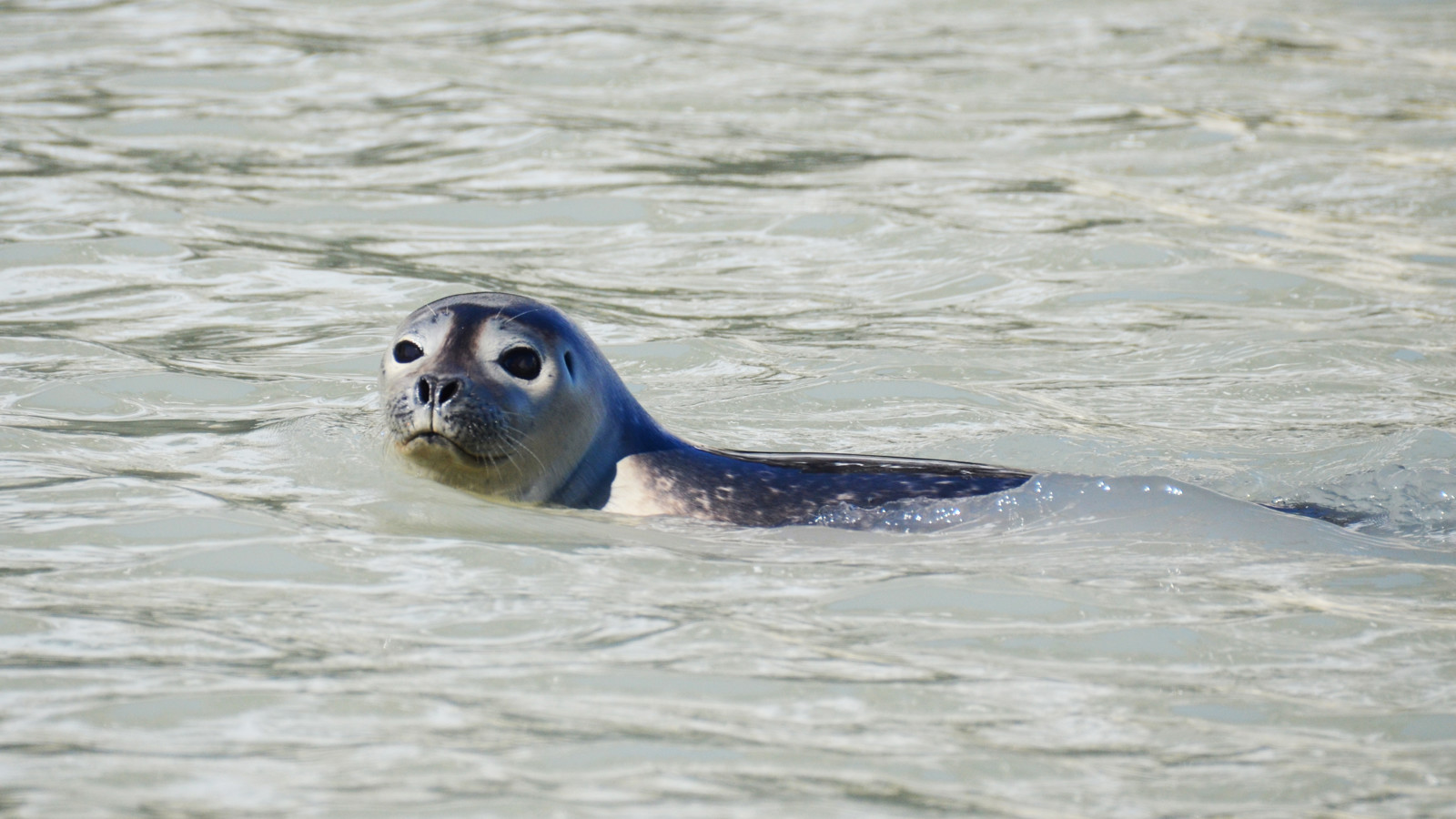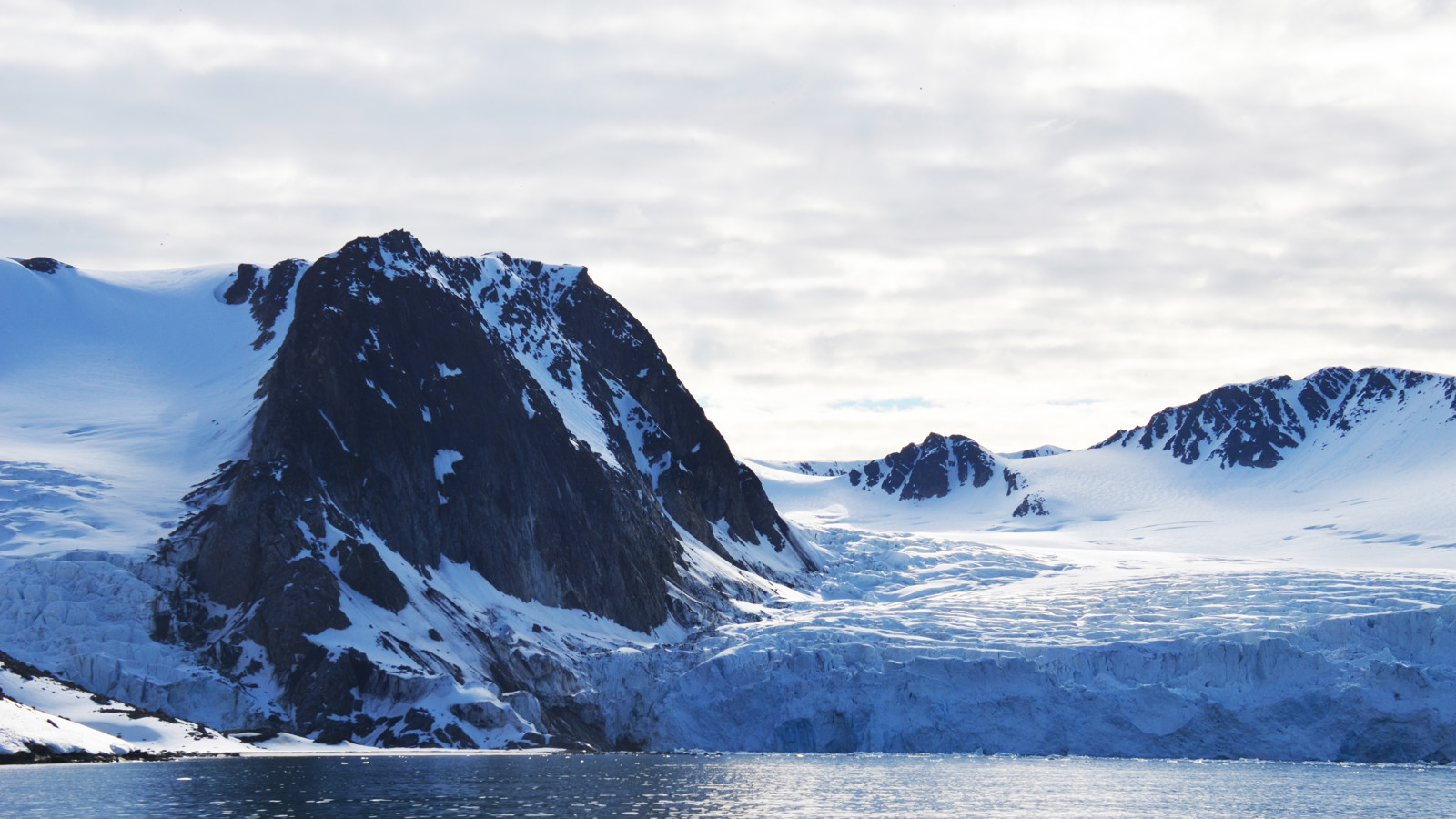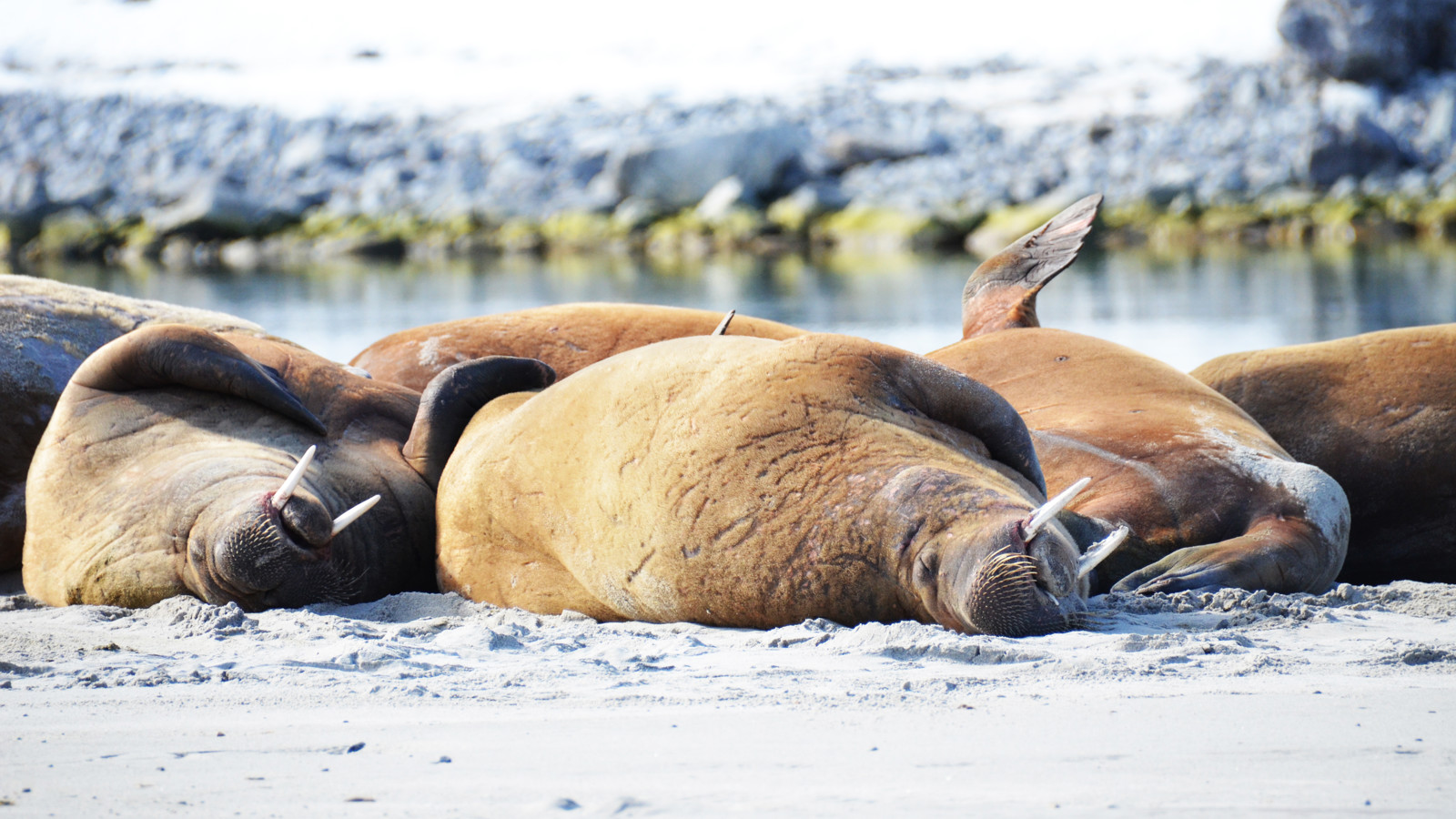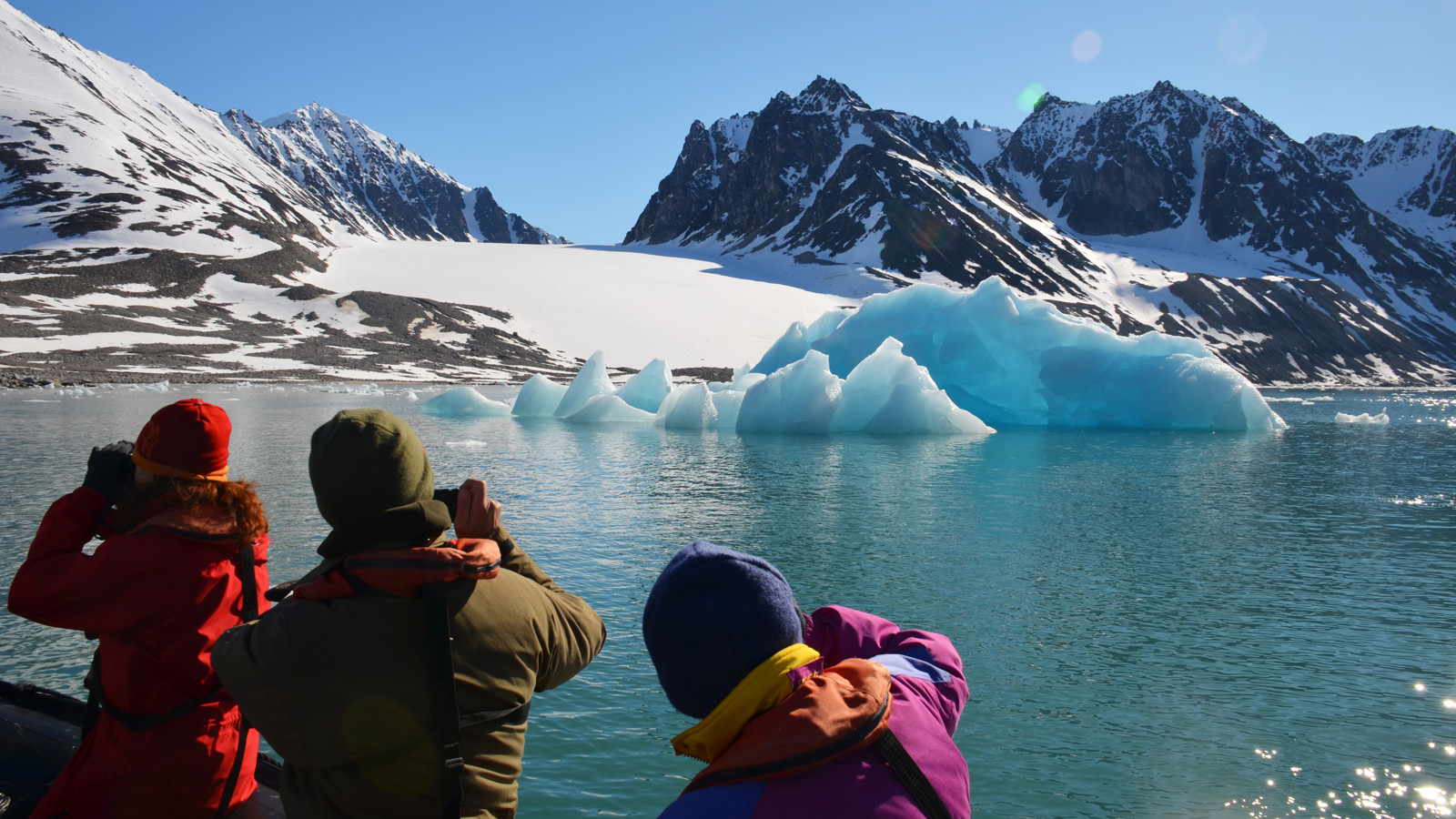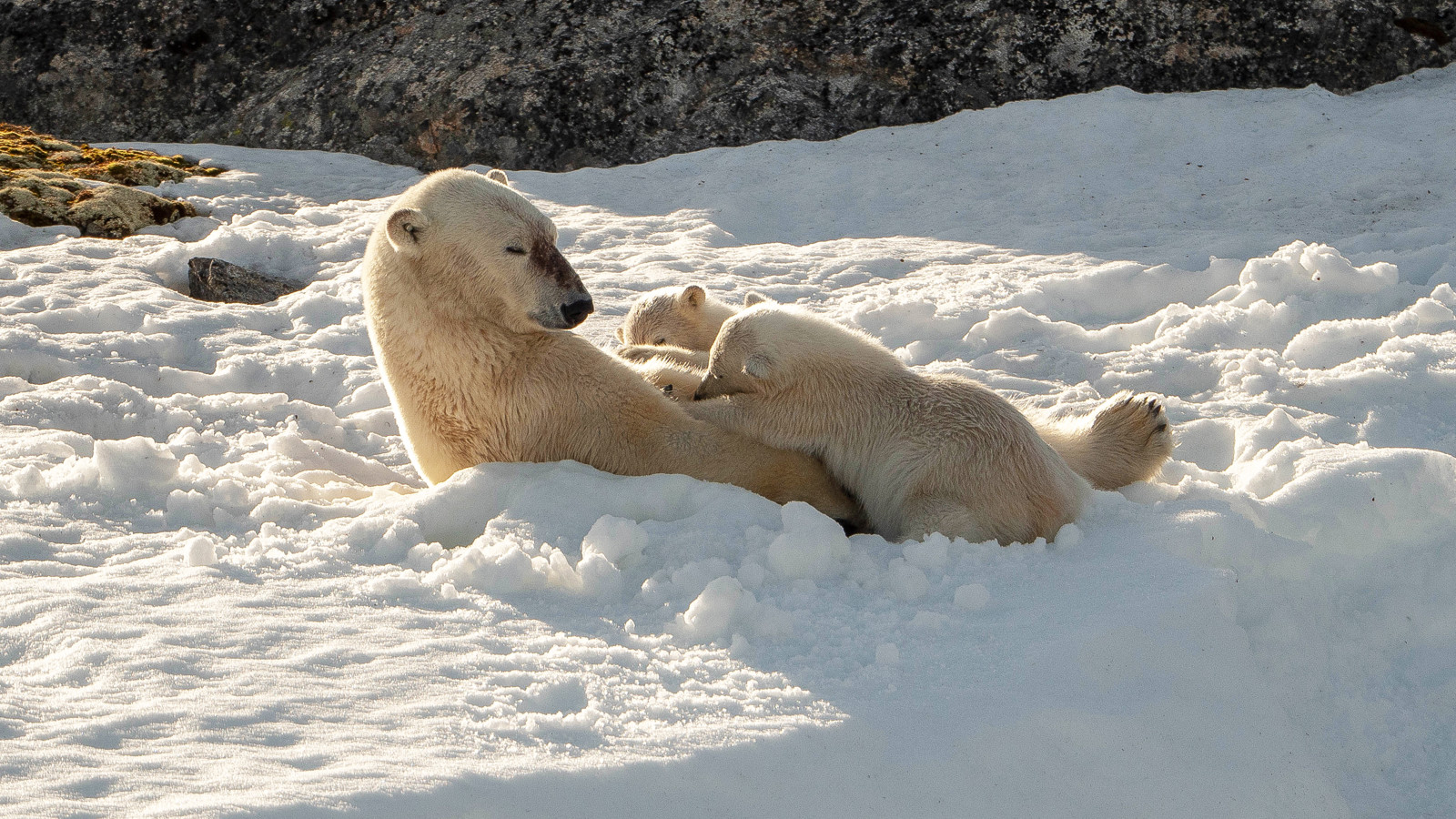In 2017, our classic 12-passenger ship M/S Sjøveien started her career as an expedition ship in Svalbard. Read about one of the exciting days on the expedition cruise with M/S Sjøveien, the 17 – 25 June.
19 June
The day started with a Zodiac cruise under perfect blue skies and sunshine into the back of Magdalenefjord, experiencing brash ice and viewing ringed seals. We also took our first steps on shore on the 800-metre-high Alkekongen for views of nesting Little Auks.
Later we visited the same walrus, resting in the sheltered Gullybukta. Here, we also found nesting Arctic terns were gathered in tens of pairs. More perfect conditions awaited us in Hamiltonbukta where we witnessed the activity of our first Brünnich’s Guillemot and Kittiwake colony, plus our first Polar bear, a mother with two cubs of the year scavenging and nursing on the islets in the center of the bay. What a day!
Please note: Depending on the lens used for a photo or video shot an animal may appear to be closer than it is. We always follow strict wildlife guidelines to ensure that we do not cause any disturbance.

